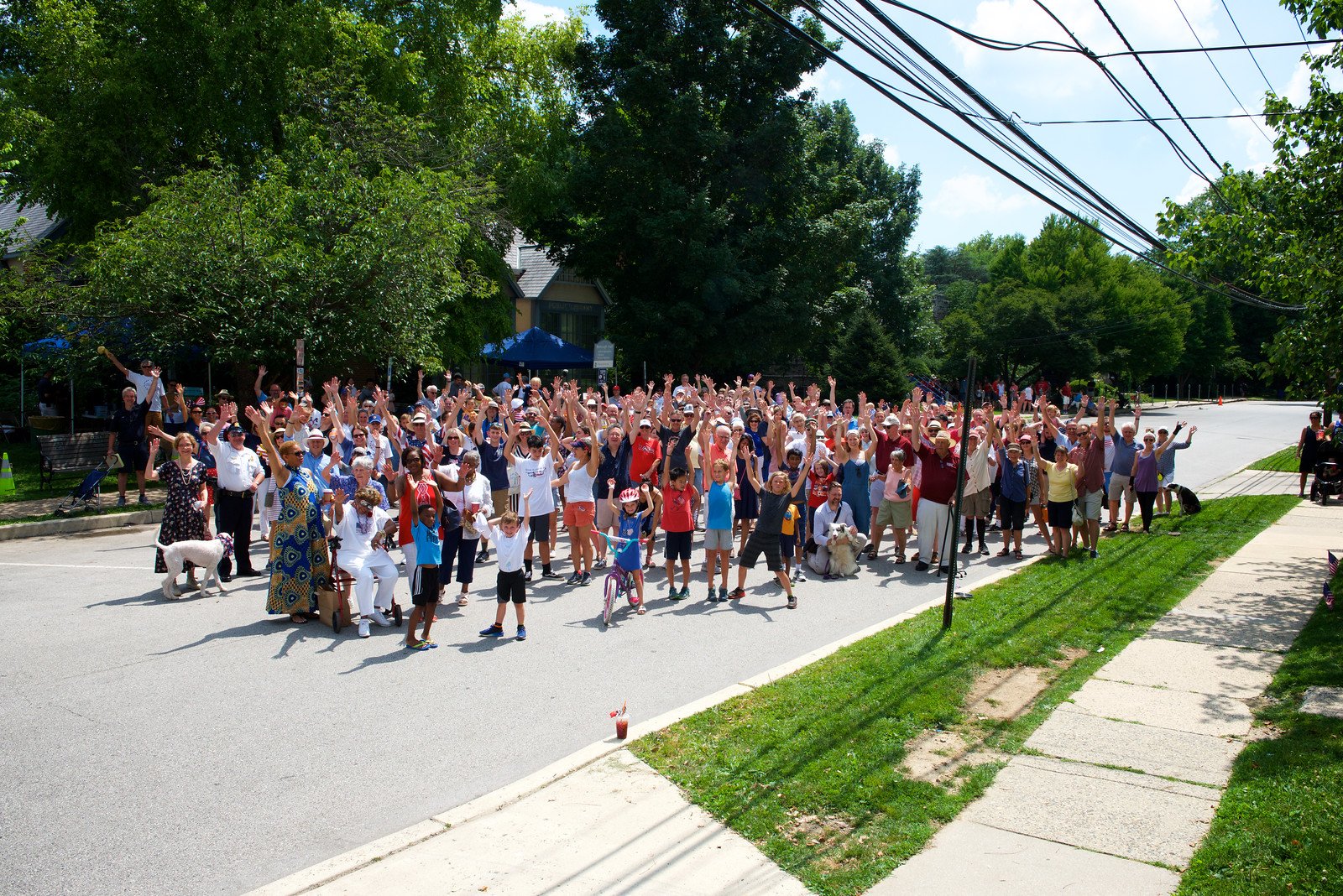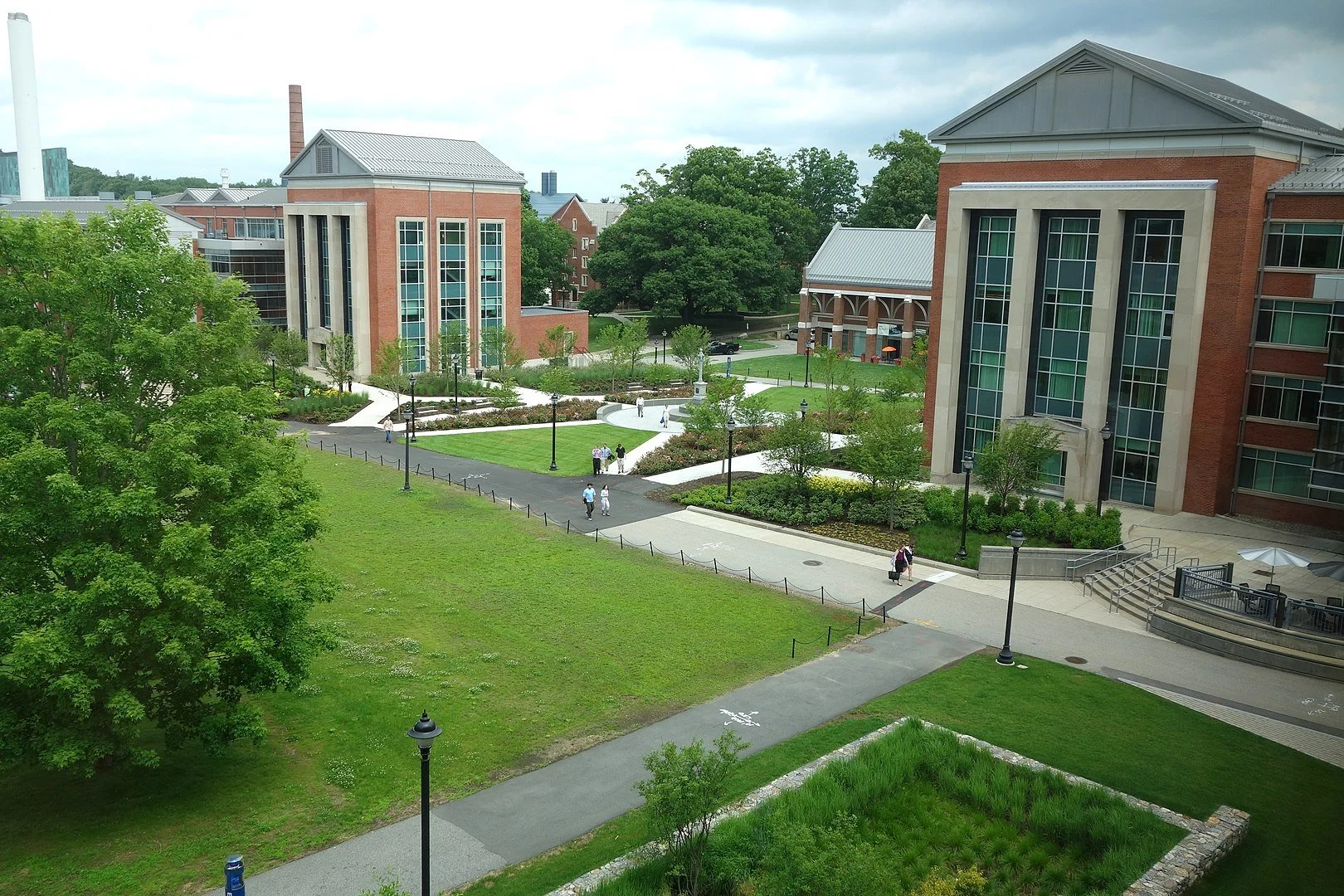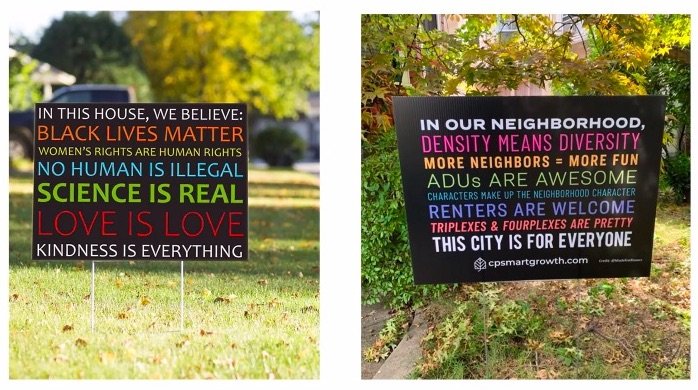
Affordable Swarthmore:
Housing, Zoning, and Community
Photo: Andy Shelter
About Affordable Swarthmore: What This Blog Is and Is Not
Last summer, startled by the alarming rise of housing prices in Swarthmore, a group of neighbors started meeting to talk about the problem. Of course, it isn’t just our problem. Housing affordability (or lack of affordability) is a nationwide crisis. But once you start to think about that, you can get dizzy and want to go back to bed.
One advantage of living in a small town is that it seems possible to solve local problems—or at least to have a fighting chance of solving them. So we decided not to hide our heads under our pillows but instead to go out into the community and see what we could do.
In October, we circulated a petition. It read in part:
As residents of Swarthmore, we are concerned about the future of development and the issue of affordability. We believe now is the time to take stock of our town’s values and ensure that our planning, zoning, and land-use ordinances align with those values….We ask Borough Council to take steps to maintain a diversity of housing and retail space in Swarthmore, and to seek ways to keep the borough affordable and welcoming to a wide range of people.
Within a couple of weeks, over 300 people had signed. We presented the petition to our borough council, and in December they authorized a task force with the mission of recommending strategies to “preserve and expand reasonably priced housing in Swarthmore.”
I don’t know how to do that, but I’ve been thinking about it a lot for the last eight months. I’ve read books and articles, had coffee with many neighbors, gone to webinars, and called up strangers on the phone. Lots of ideas are swirling in my head. I’m a writer by profession, and my instinct when it comes to swirling thoughts is to try to make sense of them by organizing them into sentences and paragraphs, then sharing them with others.
The affordability task force started meeting in March. I am its chair, but this blog is not its mouthpiece. Rather, it is a record of my explorations, wonderings, and ponderings.
This is a chronicle of one woman’s effort to learn more about housing affordability and to contemplate what we might change to make our community more affordable and welcoming.
Scroll down to start reading!
-April 1, 2022
A Different Kind of College Town
The town planner from Mansfield, Connecticut, told me that professors at the University of Connecticut tend not to live in their college town because the houses are so run down.
I was surprised. Here in Swarthmore, when college professors don’t live in town, it’s often because the houses are so expensive.
I’d called the Mansfield planner, Linda Painter, because I wanted to hear about the town’s Affordable Housing Plan, passed last year. What kind of response did they get from residents? How did the plan’s proponents persuade the town to support it? How did the town council respond to the kinds of concerns I’ve heard in Swarthmore, for instance that permitting single-family houses to be converted to duplexes, or legalizing garage apartments (i.e., accessory dwelling units, or ADUs), might hurt property values or cause unwelcome noise or congestion?
But Linda reported that the residents of Mansfield didn’t have many objections. Their questions tended to be less about money than about logistics. “Sometimes people would call and ask how a project would affect their getting in and out of their driveway, if they lived opposite a building,” Linda said. “Technical things like that.”
She must have seen my startled look through the Zoom screen. “We’re a very progressive community,” she explained.
Campus of the University of Connecticut in Mansfield
I got Linda’s name from DesegregateCT, an organization that campaigns for zoning reform across Connecticut in order to “make communities more equitable, affordable, and environmentally sustainable.” They have created a zoning atlas of their state and an easy-to-understand playbook for advocates of zoning reform anywhere.
Hearing that I was interested in learning from a community that was addressing the affordability crisis, the staff at DesegregateCT recommended Mansfield because it’s also a college town. That’s true, but what a different kind of college town! Unlike Swarthmore with its modest population of 1,400 undergraduates, Mansfield’s UConn has 12,000 students and Division I sports.
Accessory Dwelling Units (ADUs)
Still, the concern of some Swarthmoreans that permitting, for example, ADUs would spread noisy, disorderly college students throughout the town is a very real worry in Mansfield. To address this concern, Linda told me, the town requires that either the main dwelling or the ADU be occupied by the owner. This owner-occupancy requirement helps ensure that the renters won’t be too noisy or make too much of a mess.
The bottom line about ADUs in Mansfield, according to Linda? “They allow people to stay in their homes.”
For townspeople having trouble paying their mortgage or taxes—possibly because of an illness, job loss, or retirement—the rental income makes it possible for them to remain where they are.
Beyond Zoning Changes
Mansfield also has an Affordable Housing Trust, created last November. Money from the trust will help income-eligible residents with down payments, make repairs that will allow them to stay in their houses, and create accessible homes for people with disabilities. Although the money from the trust isn’t available yet, the town’s new Affordable Housing Committee is tossing around ideas to fund it. These include small fees for building permit fees and proceeds from the payment in lieu of taxes (PILOT) the town gets from the university. (As a non-profit, the university is tax exempt, so it makes non-tax payments to its home municipality instead.)
Swarthmore College, too, pays a PILOT, largely to support the police, fire, and ambulance services the borough provides. These days, the amount of the PILOT is about $350,000. The college also pays property taxes on the hundred-plus houses and apartments it rents to faculty and staff.
That’s a substantial contribution. Still, I find myself wondering whether the college board and administration might consider some further creative partnership to help keep the borough more equitable, affordable, and environmentally sustainable—what it would be worth to them.
I wonder what it’s worth to all of us.
ADUs Are Awesome: Living Up to Community Values
Accessory dwelling units (a.k.a. ADUs, granny flats, garage apartments, accessory apartments, or in-law suites) are one way to make more housing more accessible to more people.
“We’re at the same place we were in the 1960s,” Dwight Merriam laments to the crowd on Zoom.
He’s talking about intergenerational wealth—how much money people pass on to their children. Specifically, he’s talking about how much more wealth White people are able to pass down than non-White ones can. “How do we get past that?” he asks.
A land-use lawyer, law professor, and past president of the American Institute of Certified Planners, Merriam has been active in Connecticut’s effort to make more housing more financially accessible to more people.
One approach he’s enthusiastic about is legalizing accessory dwelling units, also known as ADUs, granny flats, garage apartments, accessory apartments, or in-law suites. ADUs have been the subject of many recent articles, studies, and webinars—like this one from the organization DesegregateCT, which I attended to learn more about the small dwellings and how they can help address housing affordability and the racial wealth gap.
In the webinar, Merriam expounded on the multiple benefits of ADUs, which he says “enable us to take care of empty-nesters and single people and young people.”
Specifically, they:
● Create value by raising what a property is worth.
● Provide income to help the less affluent afford mortgage payments and taxes.
● Offer a sense of safety for older people who may feel more comfortable having someone they know living close at hand.
● Supply a path of entry to people who otherwise couldn’t afford to live in a town.
● Mitigate the effects of climate change by using less electricity and water than larger dwellings—and, when built near public transportation, allowing more people to get out of their cars.
But it’s the equity issue that Merriam’s is most passionate about. He is among a small but growing cadre of proponents of permitting owners of ADUs to subdivide their land and sell the second unit. Purchasers can then “begin to achieve the intergenerational wealth that comes from ownership.”
California passed legislation permitting such sales last year.
Other participants in the webinar were equally passionate. Kyle Shiel, a senior planner for the town of Manchester, showed a photo of the familiar “In this house, we believe” yard sign. “In a lot of communities, you’ll see signs indicating these sentiments,” he noted. “But they won’t allow ADUs.”
Some people object to ADUs because they worry about parking congestion, overcrowding, changing the look of a neighborhood, or the potential for noisy tenants. Many studies have found these concerns to be misplaced, noting that ADUs tend to be highly dispersed and blend into neighborhoods, and that onsite landlords keep the risk of noise or neglect low.
Shiel is frustrated with people who say they are committed to racial equity yet don’t see how resisting ADUs (and other modest density increases) helps perpetuate racial segregation. For him, supporting more housing is a way for people to put their money where their mouth is.
“We need to live up to our values,” he says.
Last year, Connecticut approved a new law requiring towns to permit accessory apartments of up to 1,000 square feet or 30% the size of the main dwelling by right. That means that any homeowner can build one without getting special permission from their town. (Towns were allowed to opt out of the requirement if they did so by the end of 2021.)
In Swarthmore, only senior citizens or people with disabilities who want to house a caregiver can legally create an accessory apartment. But the borough is actually home to a bunch of ADUs. Most of them were built decades before the local zoning code was drafted in 1976 and have therefore been grandfathered in. Our community is dotted with elegant carriage houses and old-fashioned garages that might make great homes.
If you live in an ADU, or rent one out—or if you know someone who does—I’d love to hear about it. Please email me at rachel@rachelpastan.com.
What Is “Affordable” Anyway?
As I talk to people in town about my concerns that the rising cost of housing is rapidly pushing the price of entry to our community beyond the reach of many—and changing the nature of the town in the process—I’m alert to what they hear when I say affordability.
Photo courtesy of San Jose Library
When I got to the council room to set up for the affordability task force meeting, it was occupied by children and dogs. “What’s going on?” I asked the man outside the door, whom I recognized as Swarthmore’s children’s librarian.
PAWS for Reading, the popular program in which children practice their skills by reading aloud to a therapy dog, was just finishing up, he explained.
PAWS for Reading is all about learning and support. It’s about progress and words. So is the Swarthmore Task Force on Development and Affordability.
Right now, in the second month of our one-year assignment, those of us on the task force are learning about what kind of housing we have in our town and what other communities are doing to address rapidly rising housing costs. We hope the preservation and expansion of reasonably priced housing in Swarthmore will support our residents and shape our town’s future in a positive way. At tonight’s meeting, we hope to get our minds around a slippery, tricky word: affordability.
Affordability is right there in the name of our task force, but what does it actually mean? Also, affordable for whom?
After the dogs and children cleared the room, we began to wrestle with these questions.
“I think allowing people who have been living here the ability to stay is important,” one task member said. “But,” he added, “I wouldn’t limit it to that.”
“Does staying in Swarthmore mean being able to stay in your house?” another asked. “Or does it mean being able to stay in town?”
A third wondered which Swarthmore properties might fit the zoning code’s criteria for conversion to cooperative senior housing. Seniors were definitely on our minds, but so were families with children, multigenerational families, and single people. How did affordability apply?
Dueling Definitions
As I talk to people in town about my concerns that the rising cost of housing is rapidly pushing the price of entry to our community beyond the reach of many—and changing the nature of the town in the process—I’m alert to what they hear when I say affordability. Some immediately picture public housing apartment buildings for people with low incomes. Others see condominiums selling for between $125K and $300K, or one-bedroom apartments renting for less than $1,000 a month. Still others imagine single-family houses selling for less than half a million dollars—an increasing rarity around here.
According to the department of Housing and Urban Development, households should spend no more than 30% of their income on housing costs: rent or mortgage payments, insurance, taxes, and utilities. If you spend more than 30% of your income on housing, HUD considers you “cost burdened.” If you spend more than 50%, you are “very cost burdened.”
This table shows specific dollar amounts for that 30% depending on how much someone earns:
According to an assessment done by Local Housing Solutions of New York University’s Furman Center, 51% of Swarthmore renters were moderately or severely cost burdened in 2019. This was up from 38% in 2014. For owner households, the percentages were 23% in 2014 and 21% in 2019.
It’s clear that many of my neighbors are struggling to afford to keep living here.
Other Words and Terms
I’ve contacted other communities that are trying to do something about the affordability crisis. In talking to town planners and council members in places like Mansfield, Connecticut, Norwich, Vermont, Leavenworth, Washington, and Manchester-by-the-Sea, Massachusetts. I’ve heard various words and terms for what Swarthmore (and America) doesn’t have enough of.
Attainable housing is defined by the nonprofit Urban Land Institute as “nonsubsidized, for-sale housing that households earning between 80 and 120 percent of the area median income can afford.”
But this framing raises questions too. If we’re talking about making it possible for families earning “area median income” to live in Swarthmore, what area are we talking about? Swarthmore only? The Wallingford-Swarthmore School District? Delaware County?
Workforce housing nods to the idea that people who work in a community should be able to live there.
Of course, in any community, there is a wide range of occupations. People who work in the borough are small merchants and restaurant wait staff, elementary school teachers and Swarthmore College professors. With the housing market in its current state, few if any of these folks can afford to buy a home in town unless they have family money or a spouse who earns a lot. Renting is cheaper, but rents too are rising fast.
Community housing is a term I ran across when learning about Manchester-by-the-Sea, Massachusetts, an affluent town about the size of Swarthmore that built an award-winning multi-family mixed-used complex back in the early 2000s. (Now they’re trying to figure out how to follow up on that success.) According to resident Chris Olney, community housing means “homes that are well designed and priced to address the broad needs and aspirations of the whole community of Manchester, not just those wealthy enough to pay for stately new residences.”
A Work in Progress
Back in the council room, our talk circled around retirees on fixed incomes, opportunities for newcomers to gain a foothold in our housing market, and recent changes in the Historically Black Neighborhood of Swarthmore, where few of the families who lived there for generations are left. We jotted ideas, definitions, and questions on big pieces of paper stuck on the council room wall.
“I don’t feel we need to have one all-encompassing definition of affordability,” someone said. “It could be helpful to have multiple definitions, some more ambitious than others.”
Someone else volunteered to assemble a working list of definitions to bring to the next meeting.
Knowing we’d revisit the topic again and again, we agreed to set it aside for the evening.
I’m guessing the early readers didn’t perfect their literacy skills in one afternoon with a therapy dog either.
If you have thoughts on the question or definition of “affordability,” please share them in the comments section below.



